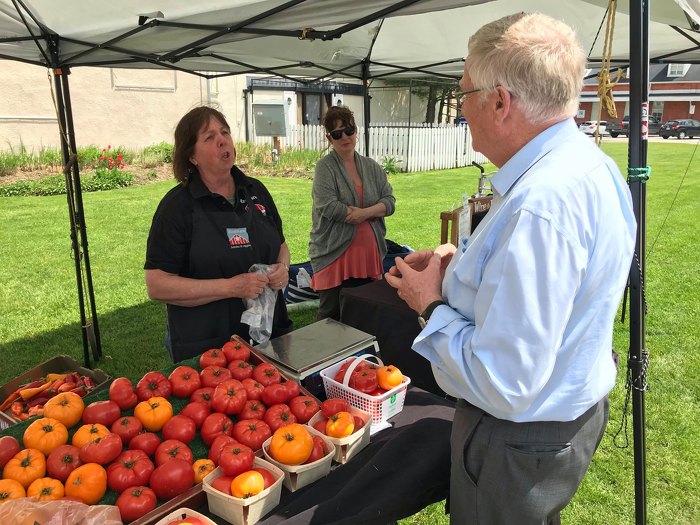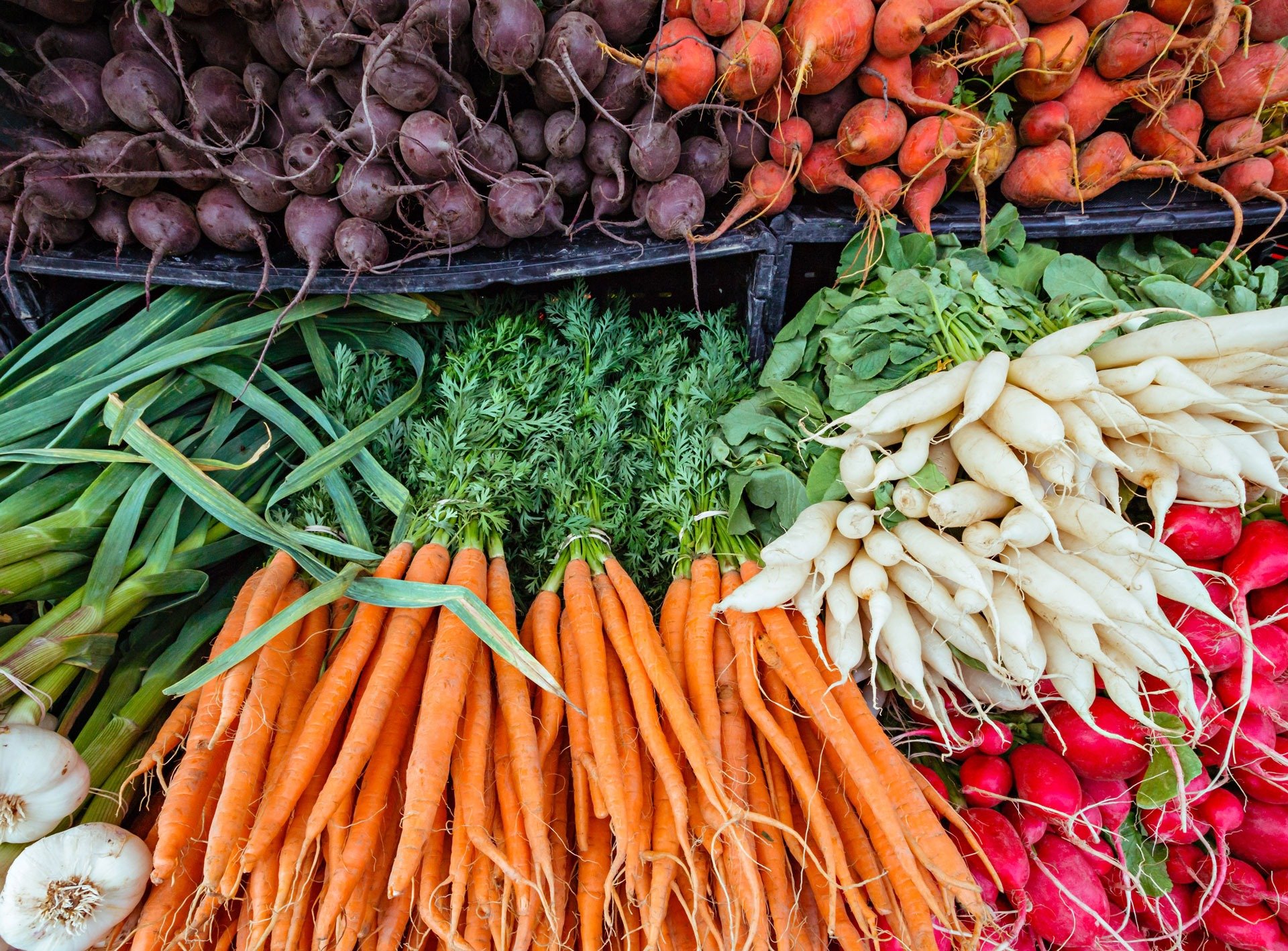Safeguarding the COVID-Struck Food Supply
"We've had people contact us for our hogs from Colorado, western Nebraska, way up in South Dakota, and we tell them 'Listen, there are other hog farmers like us. Go talk to your local guy and help them out, we're not the only ones hurting.""We're either going to get on top of this or we're going to lose."Shelly Pinkleman, hog farmer, Nebraska"[Changing the model], it helped keep the company alive.""I'm not saying it's as much as before, there's still an after-shock, but we're adjusting better and better."Alexandere Aubin, Gaspor Farms, Saint Jerome, Quebec
 |
| RedBarn Berries & Veggies |
"I tried selling papaya in nearby areas but nobody was willing to buy [with people concerned over virus transmission in hand-to-hand sales].""[An estimate of thousands in rupees lost from his papaya crop this year, equal to the profit seen from the crop last year]."Vinod Patidar, fruit and soybean farmer, Madhya Prades, India
India's Ninjacart buys directly from farmers to sell to retailers and
restaurants. According to co-founder Vasudevan Chinnathambi, producers
look for multiple channels to enable connection with customers, leading
the company to add 120 farmers to its platform, with a "huge backlog" of
other farmers hoping to join, in the face of India's coronavirus
lockdown restrictions.
Hard times call for flexibility and innovation; both beat hand-wringing,
deploring a situation no one could have anticipated and no one knows
the final outcome of. Two months ago when Quebec went into lockdown
Gaspor Farms saw their market do an overnight meltdown. As a family
business, 95 percent of its milk-fed piglet products went to high-end
restaurants. The lockdown forced them to look elsewhere for new
customers and they began to offer boxes of assorted sausages, ribs and
ham direct to consumers.
 |
| Getty |
In May, Gaspor Farms sold 300 to 400 boxes weekly, inspired to begin
working on a new e-commerce platform. But as Vinod Patidar in the
central Indian state of Madhya Pradesh discovered, the search for new
buyers can be an aggravating bust. Mr. Patidar planted four acres of
papayas, but unable to sell them he plowed close to half of his crop
into the ground, the rest he's attempting to sell directly to consumers,
but customers are frustratingly wary.
Farmers across the globe have been left with unsold food as a result of
broken supply chains which could never have been anticipated until the
arrival of the SARS-CoV-2 pandemic. Clint and Shelly Pinkelman, faced
with the choice of euthanizing pigs they couldn't sell or feeding them
with no sale and profit possible under the reliable old system, have
chosen to sell their wares directly to consumers.
Their usual buyer was the closed-down Smjthfield Foods Inc. But through
connections linking friends and family, spots were booked at meat
processors that handle individual animals. Half of their 600
market-ready hogs have now been sold and many brought in above-market
prices. Watermelon growers in India loaded up tractors to sell their
fruit in nearby villages, while wholesalers in the U.K. have taken to
redirecting supplies meant for restaurants, as roadside stands in
Florida are now selling blueberries producers are unable to ship out to
their usual customers.
| Windmill Farm Finger Lakes, New York State. (photo by Chris Clayton) |
The novel coronavirus and the immediate response to place everything on
hold with focusing on managing the viral threat had resulted in snarled
transportation, labour difficulties, restaurant closures and plant
shutdowns, forcing farmers to smash eggs, dump milk and cull hogs.
Direct-to-consumer sales is time-consuming and limited in its reach, but
it's an aid to creating another avenue for people to have access to
food when grocery stores struggle to keep their shelves well stocked.
Online start-ups have been featuring online marketplaces helping to
connect growers directly to buyers, and producers are now waiting,
anxious to buy onto the lists, relaxed restrictions or not. Because this
is a situation, simply put, where no one knows what comes next; whether
opening will result in renewed infection rates, giving the virus the
opportunity to mount a second and perhaps more severe wave of
infections, or whether the virus will weaken, die out and everything
return to normal.
 |
Experts in agriculture forecast that these new selling innovations will
remain, once plants are back in normal operation and grocery shelves are
completely stocked. Consumers, having faced the trauma of dwindling
food stocks and empty grocery shelves, are now more cautious and curious
about where their food comes from, many among them willing to commit to
direct-to-consumer services by farmers prepared to deliver individual,
varied vegetable boxes on a weekly basis through the harvest season.
Labels: Crisis Management, Food Supply, Novel Coronavirus

0 Comments:
Post a Comment
<< Home